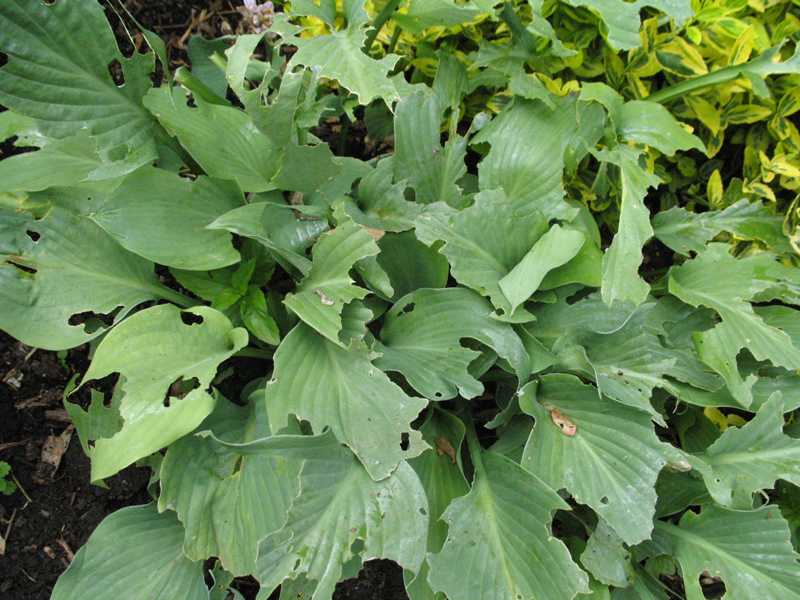 |
Slug and snail damage
These mollusks love hosta leaves. Since slugs are nocturnal and hide during the day, gardeners may not see the slugs themselves but only the evidence of their feeding. Look for smooth but irregular holes along leaf edges or between veins. Sometimes, entire leaves are sheared off at the stem. Shiny slime trails may be found on the leaves and ground around plants.
Lookalikes: Insect damage, hail damage (torn holes) |
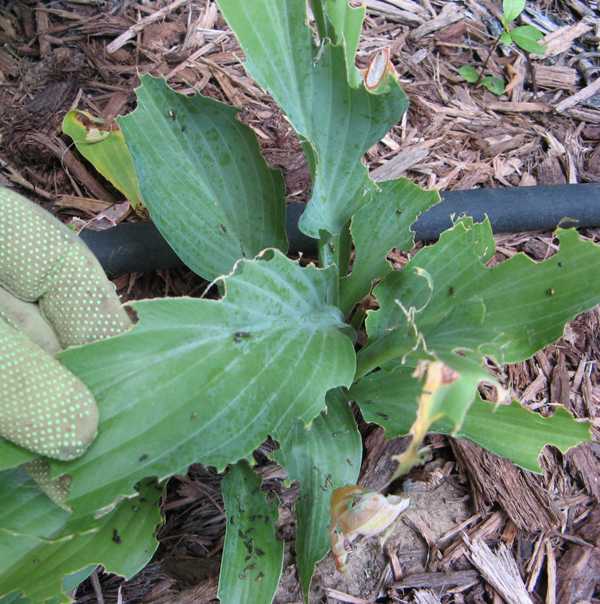 |
Chewing insects
Many insects may chew hosta leaves and stems, but the only way to determine the culprit is to catch it in the act as in the image on the left. Although not in the picture, blister beetles were seen chewing this hosta. Grasshoppers and cutworms are also known pests of hostas.
Lookalikes: Slug damage |
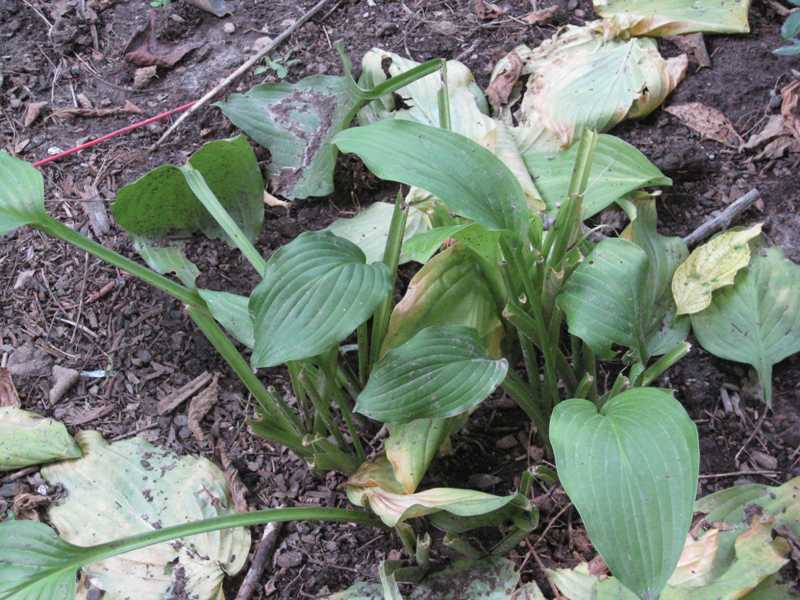 |
Rabbits
Signs of rabbit presence are clean-cut clipping of young stems and leaves, dropped leaves and distinct round droppings.
Lookalikes: Deer (ragged edged bite marks and missing leaves) |
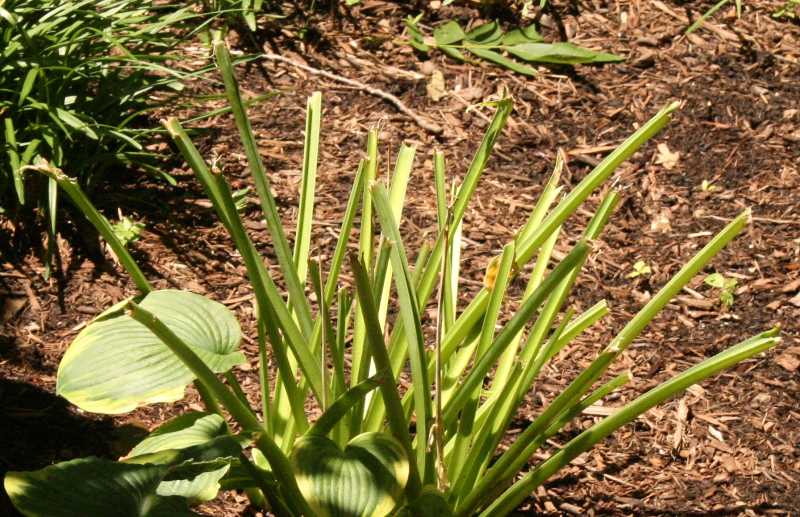 |
Deer
Browsing deer can quickly defoliate hostas, as shown in the picture on the left. They eat leaves, leaving behind stalks with ragged cut edges from their habit of yanking leaves as they bite into them.
Lookalikes: rabbits (clean cut bite marks and dropped leaves) |
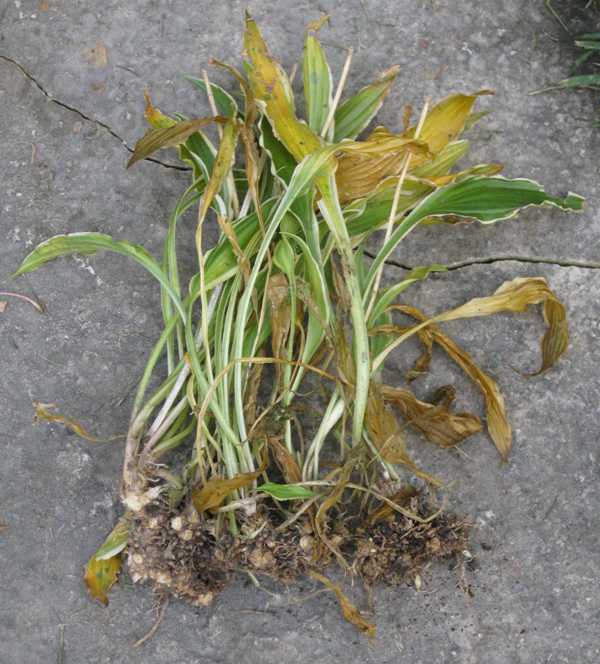
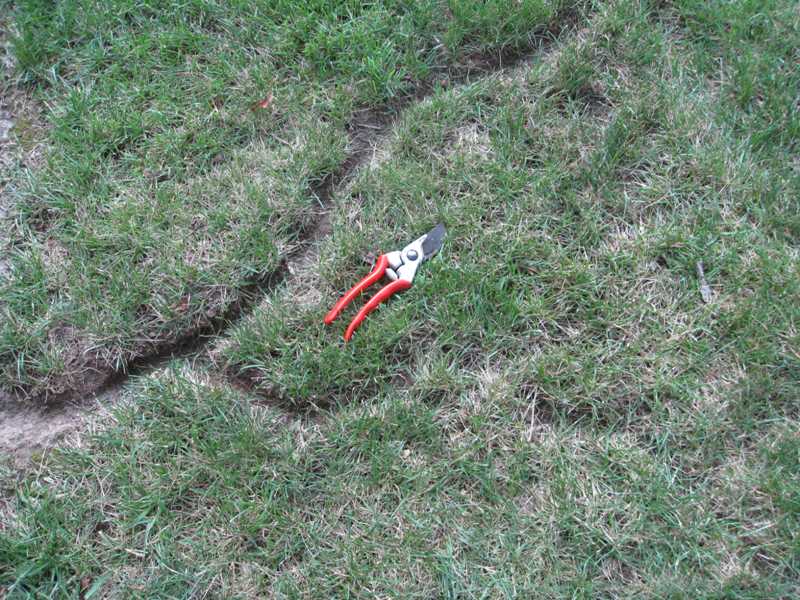 |
Voles
Voles, also called meadow mice, often tunnel into mulch, loose soil or lawns forming runs similar to mole runs but much smaller. From their hidden position in their tunnels, their presence can go unnoticed, but their damage is usually very noticeable. Look for wilted plants with missing roots or root hairs. Entire plants or sections of a plant will often collapse without a supporting root system.
Lookalikes: southern blight, drought, scorch |
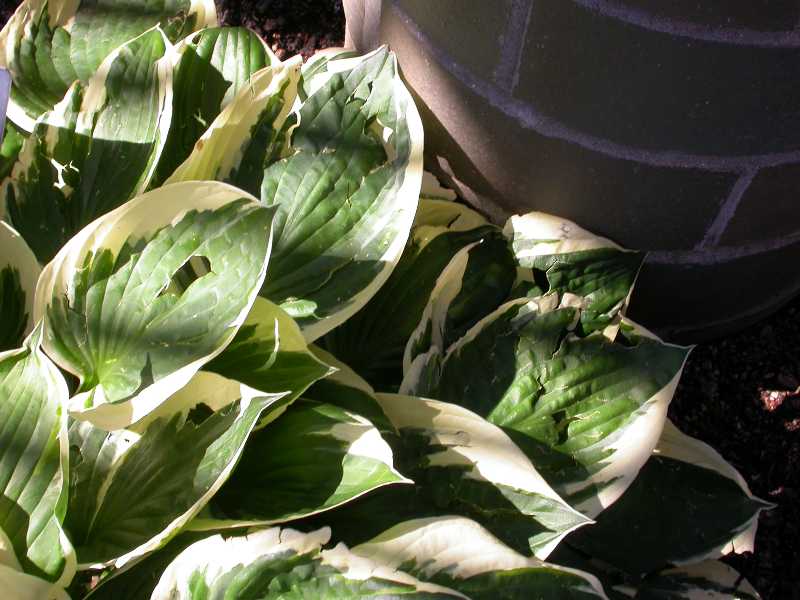 |
Hail damage
The tender tissue between leaf veins on hostas is very susceptible to damage from hail. The uppermost portion of the leaves is most affected. The leaves look torn and the holes usually have jagged edges.
Lookalikes: Slug damage (irregular but smoothly cut holes) |
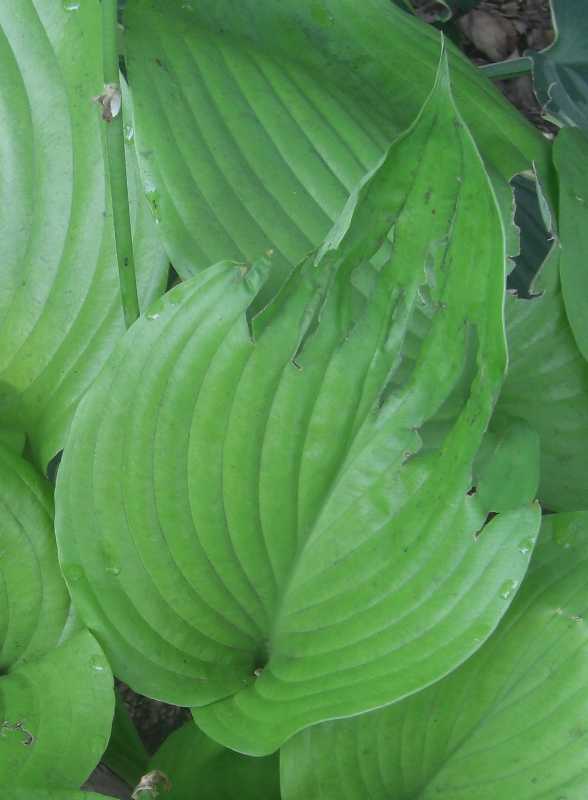
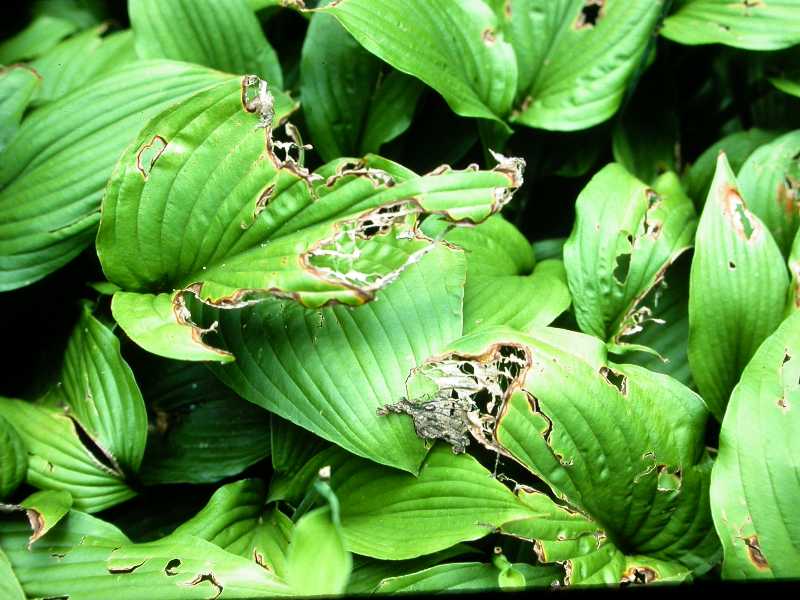 |
Frost damage
Flower buds, vegetative buds, stems, crowns, or whole plants may be injured. For confirmation examine other plants in the area. The damage affects the soft, actively growing tissues, such as, new leaves and tender shoots. As the leaves expand, damaged areas are revealed as pleated slices of jagged missing tissue (top image). Edges of damaged areas later brown and damaged tissue dies (bottom image). Damage to stems can remain hidden until active spring growth starts. In severe frosts, entire plants can become limp, blackened, and/or distorted.
Lookalikes: hail, scorch, sunburn |
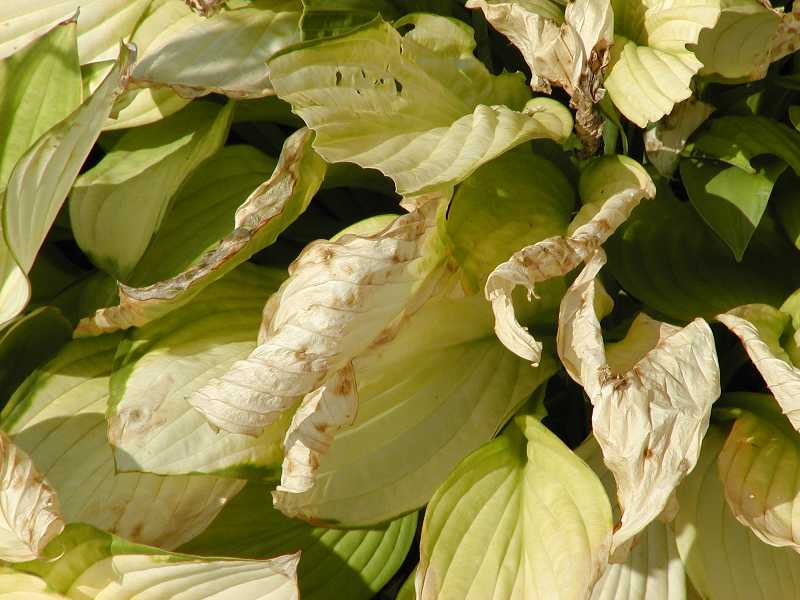 |
Scorch, sunburn or heat stress
The symptoms of scorch are the browning of leaf margins and/or yellowing or darkening of the areas between the main leaf veins. Leaves may dry, turn brown, and become brittle. Sunburn can result in the same symptoms but on the section of the leaves closest to the sun, rather than just on leaf edges. Also, sunburned areas are often bleached at first, then later turn brown and drop out. Planting hostas in direct sunlight may result in sunburn, especially in USDA Plant Hardiness Zone 6 and above.
Lookalikes: Anthracnose, drought (can cause scorched leaves, but any root or stem damage may also cause scorched leaves) |
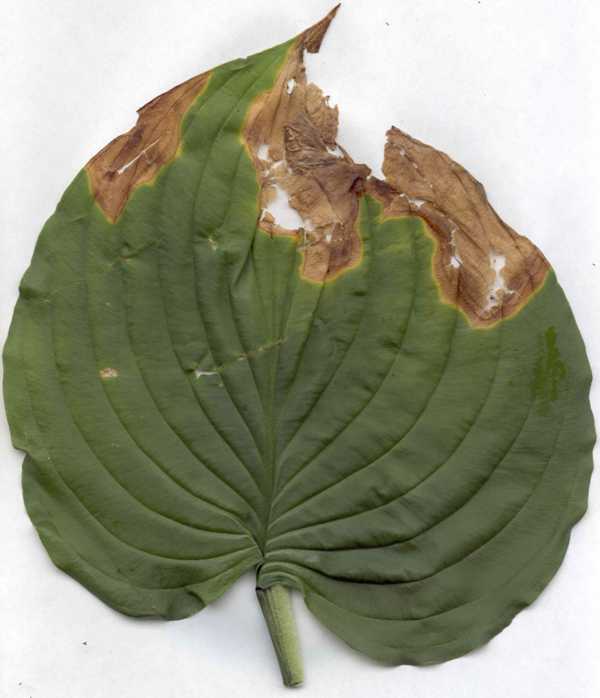 |
Anthracnose
Anthracnose is the most common foliar disease of hostas. It is characterized by irregularly shaped white to tan spots with a brown border. The spots often lose their centers and the leaves become tattered and torn. The disease thrives in warm, wet conditions, so maintaining good plant spacing is important for prevention.
Lookalikes: scorch and sunburn, frost damage |
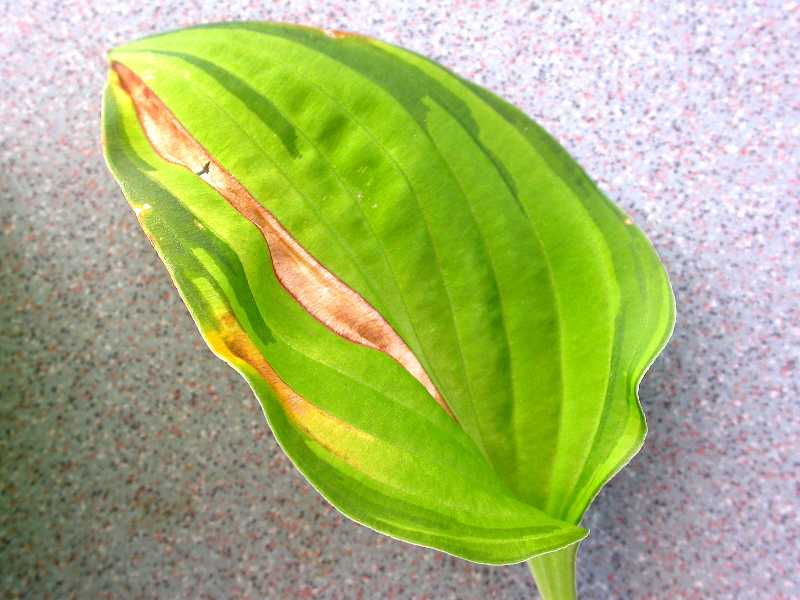 |
Hosta leaf nematodes
Hosta leaf nematodes are microscopic roundworms that live, feed and reproduce inside the tender tissue of hosta leaves. Typical symptoms begin as yellow discoloration in late June, indicating that the nematodes are feeding. Later the affected areas develop into chocolate brown streaks, islands or wedges bordered by veins. Note that the yellow and brown areas occur only BETWEEN veins and that the brown color can be seen on both the front and backside of the leaf. Eventually the entire leaf turns brown and dries up; typically the youngest leaves at the shoot tips are free of infestations, but the older leaves show progressively more severe damage. |
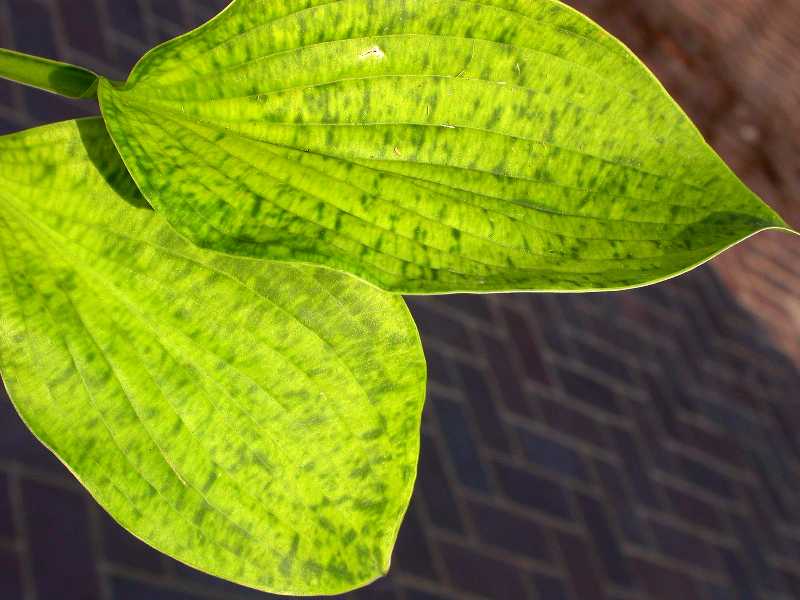
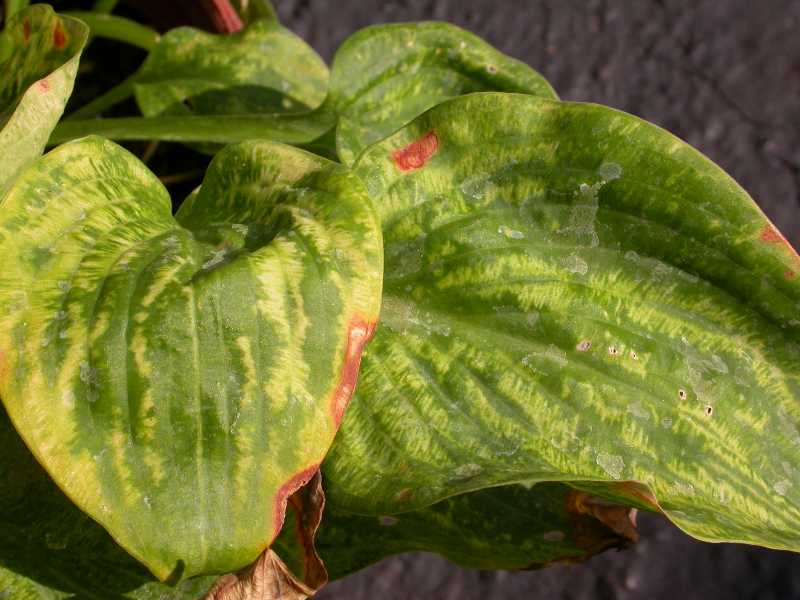 |
Hosta virus X
Early symptoms may be blue or green colored spots on the gold part of hosta leaves. These markings may bleed into the leaf giving it a mottled appearance. Leaves may appear lumpy. However, symptoms vary according to cultivar. Other symptoms include ringspots, stunting, puckering, distortion, leaf twisting and death. There is no cure for this disease. Unfortunately, many of the symptoms of hosta virus X are desirable traits in healthy hostas. The virus has been unintentionally spread by propagating, sharing, and selling diseased hostas under the mistaken belief that the symptoms of hosta virus X are naturally occurring mutated forms (sports).
Lookalikes: Unusual cultivars, reversions and mutations (sports) |
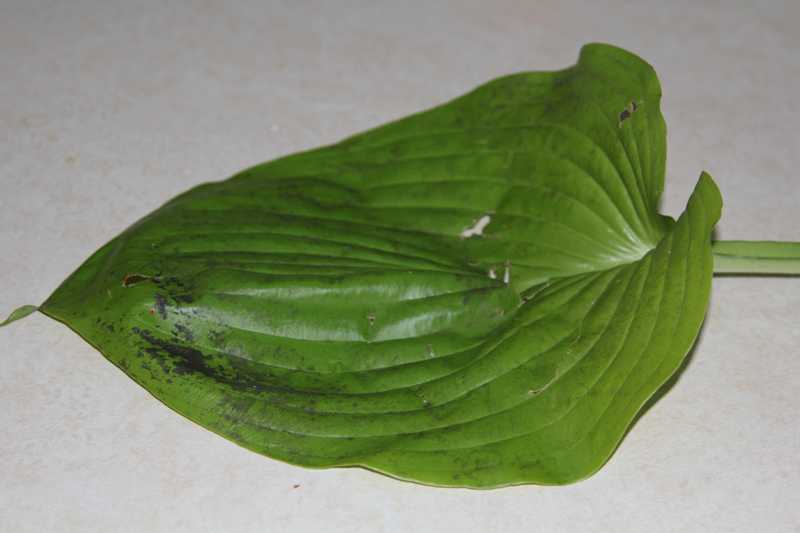 |
Sooty mold
Hostas, as shade plants, are commonly planted under trees and as a result can be covered with honeydew from insects, such as, scale and aphids, that are feeding on the trees. Honeydew is their excrement. It contains a high concentration of sugar, the perfect medium for the growth of sooty mold. A small amount of sooty mold is merely a cosmetic problem, but in large quantities, it can block light from reaching the leaf surface and reduce the vitality of the plant. Wash it off with warm, soapy water. |
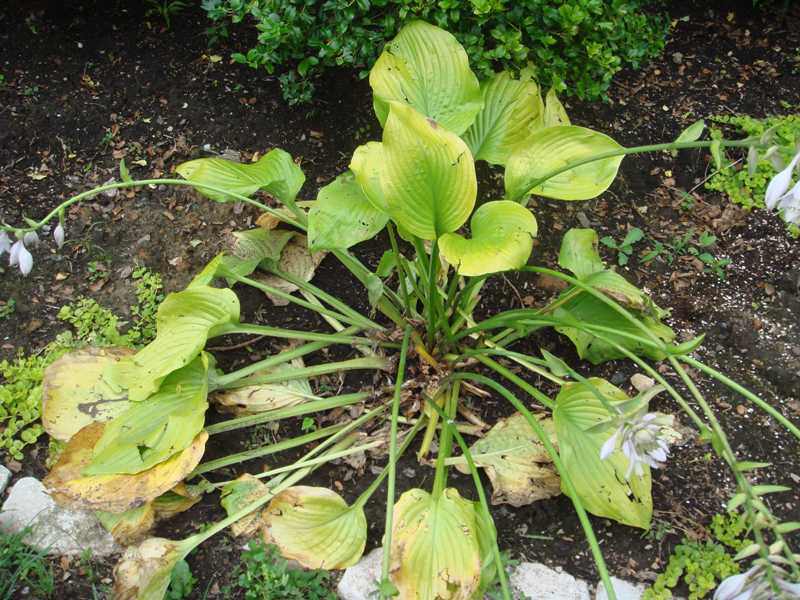
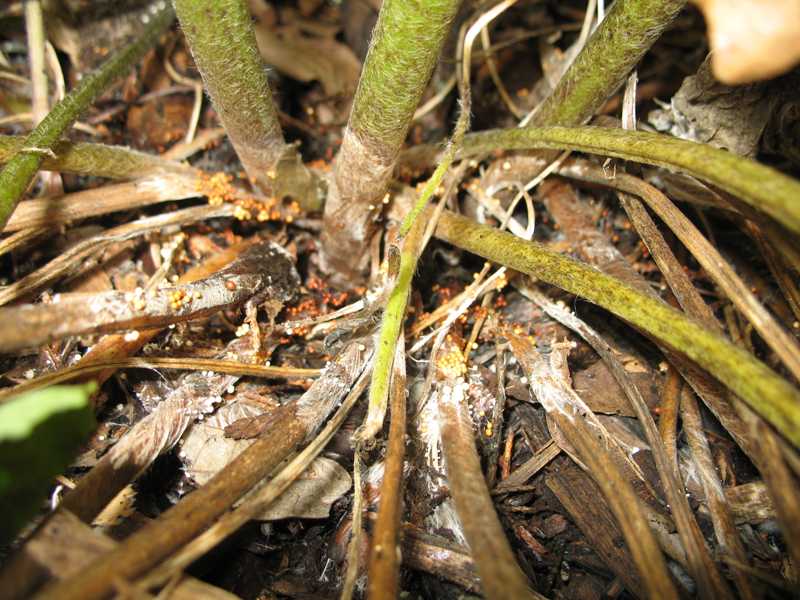 |
Southern blight
Southern blight is a fungal disease that causes the base of the leaves to rot, which in turn causes leaves to turn yellow, collapse, and die (top image). When the temperature exceeds 70 degrees F, infected plants develop discolored, water-soaked stem lesions near the soil line. When tugged, leaves will come off. During periods of high humidity, coarse cottony webbing (mycelium) develops and fans out over the stem base and surrounding soil (bottom image). Sclerotia, which resemble mustard seeds and vary from white to reddish tan to light brown in color, develop at the base of the plant (bottom image). Enough sclerotia may form to create a crust on the soil.
Lookalikes: vole damage, drought (leaves will still be firmly attached). Mycelium resembles filaments produced by psyllids and leafhoppers. |
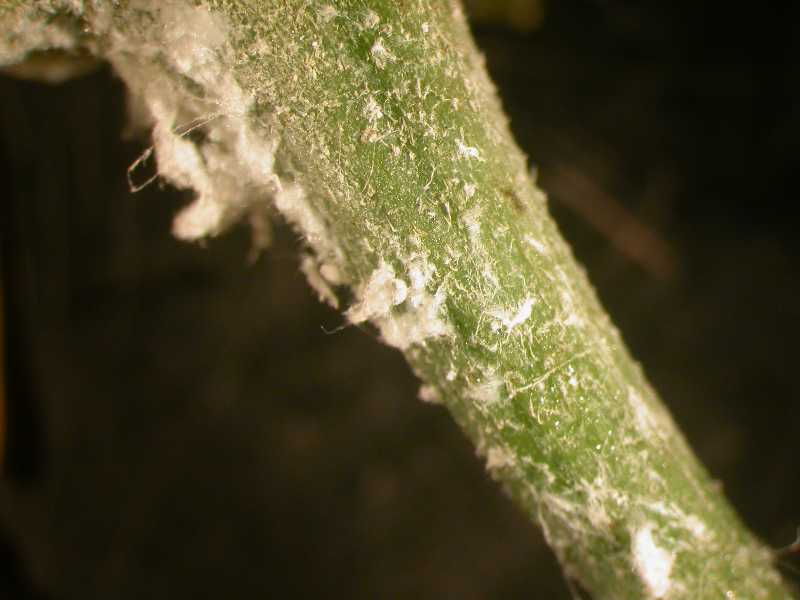 |
Psyllids or leafhoppers
The early larval stages (nymphs) of psyllids and leafhoppers often produce cottony, white filaments in which they hide until older. These filaments, which are harmless, are still there after the insects have moved on.
Lookalikes: cottony webbing (mycelium) of southern blight |
| |
Reversions and mutations (sports)
Variegated hostas sometimes lose their variegation, while other hostas may suddenly produce leaves of a different color or form. These changes may be reversions to the characteristics of a parent plant or a mutation (sport). Either kind of change may be triggered by environmental stress, although some cultivars, particularly tissue-cultured cultivars, are simply more prone to reversion than others. Whatever the cause, reversions and sports should be removed and planted elsewhere or discarded, otherwise they may take over the entire plant.
Lookalikes: Viruses, such as, Hosta Virus X, can sometimes be confused with naturally occurring mutations and care should be taken to avoid propagating or purchasing diseased plants. |